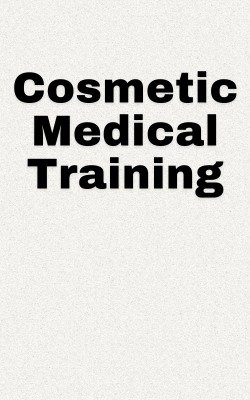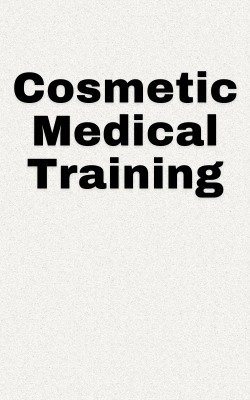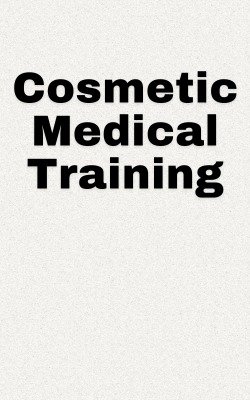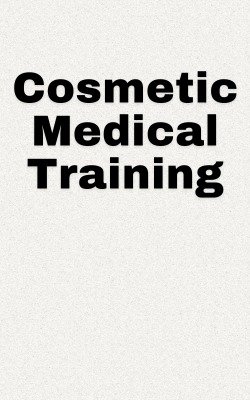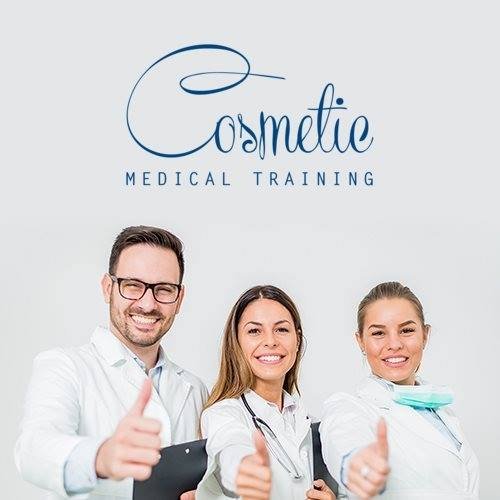
Juvederm®️ Injection Training Certification Course
- Sep 02, 2024
- | 14
What is Juvéderm®?
JUVÉDERM is a hyaluronic acid-based dermal filler designed to temporarily correct moderate to severe facial wrinkles and folds, such as nasolabial folds. It is produced using HYLACROSS technology, resulting in a smooth, gel-like consistency. Juvéderm comes in pre-filled syringes containing 0.8 mL or 1 mL of the product. The primary ingredients include hyaluronic acid (20 mg/mL) and 0.3% lidocaine for pain reduction during the injection.
JUVÉDERM works by adding volume beneath the skin’s surface, thereby smoothing and lifting the treated areas. The effects are immediate, and the results can last up to one year, depending on the treatment area and the specific product used.
Contraindication
Juvéderm is contraindicated in the following patients:
- Those with severe allergies manifested by a history of anaphylaxis or history or presence of multiple severe allergies.
- Patients with a history of allergies to gram-positive bacterial proteins.
- Patients with a history of allergies to lidocaine or other local anesthetics.
Safety Information
The package insert for Juvéderm indicates that the safety and effectiveness of the product have not been established in patients under 18 years of age and in pregnant or breastfeeding women. Post-marketing safety data suggest potential side effects including redness, swelling, pain, tenderness, firmness, lumps/bumps, bruising, discoloration, and itching at the injection site. These effects are usually mild to moderate and resolve within 14 days.
There is a risk of unintentional injection into blood vessels, which can lead to serious complications such as vision abnormalities, blindness, stroke, temporary scabs, or permanent scarring. Patients must be advised to seek immediate medical attention if they experience symptoms such as changes in vision, signs of stroke, pale skin near the injection site, or unusual pain.
Injection Techniques
Proper injection techniques are crucial for achieving optimal results and minimizing risks. The package insert recommends using a 30-gauge needle for injections. Before the procedure, ensure that the treatment area is clean and free of makeup. Use an appropriate antiseptic to cleanse the skin.
Inject Juvéderm slowly and apply minimal pressure to ensure even distribution of the product. It is essential to inject the filler into the mid to deep dermis to achieve the desired correction. Avoid injecting too superficially, as this can lead to visible lumps and bumps. Massage the treated area gently to ensure even distribution and to smooth out any irregularities.
To minimize the risk of complications, avoid injecting into areas with active inflammation or infection. Additionally, be cautious when injecting near vital structures such as blood vessels and nerves.
Clinical Trials
Clinical studies of Juvéderm involved 439 patients with moderate to severe nasolabial folds. Patients received injections of Juvéderm Ultra XC and were followed for up to 24 weeks. Results showed that 88% of patients achieved optimal cosmetic results immediately after treatment, with a significant reduction in the severity of nasolabial folds. At the 24-week follow-up, 78% of patients maintained improvement from baseline. Adverse events were generally mild and transient, with the most common being injection-site reactions.
Injection Technique
Serial Puncture
This is created with multiple, closely spaced injections along a wrinkle. It is used for superficial dermal injections and demands precise placement of the filler or gaps will be found in between the injection site. It is undesirable due to the multiple puncture wounds it generates. The needle is inserted bevel up. The product is dispensed like drops along the fold. You should massage to prevent nodule formation.
Linear Treading
This is created by completely inserting the needle in the wrinkle up to the hub of the needle and injecting the product along the track as a thread as you slide out the needle. It demands continual pressure and even distribution of the product as you remove the needle. You must stop your injection several millimeters prior to completely removing the needle from the skin to avoid superficial placement or leaking products above the skin. The skill of pushing the plunger of a syringe as you are pulling back syringe from the skin is a skill that may be difficult for some, but can be mastered with practice. Linear threading may be suboptimal for some deep folds as it does not give additional structural support.
Fanning
This is created by puncturing the epidermis once, as in the linear threading technique, and before the needle is completely removed from the skin, you “fan” clockwise or counter-clockwise the needle in a fan pattern to create a triangular shape. The additional spacing of the fanning injections depends on the size of the triangular area you want to fill. You must avoid over injecting of the proximal end of each “fanning” as product may overlap and create lumps. This is excellent in deep folds as it props up adjacent skin that may be hanging over the fold.
Injection techniques such as fanning, rapid injection, rapid flow rates, and higher volume caused an increased incidence of adverse reaction. Multiple punctures or deep subcutaneous injection did not affect the rate of adverse effects.
Aging Skin
Loss of subcutaneous volume, thinning of the skin, changes in bony structures, skin laxity due to loss of collagen and elastin, and downward gravitational shift of the skin and underlying tissues causes aging. Laugh lines and marionette lines become more prominent. The lips become thin, flat and deflate. Vertical lines form above and below the lips. Oral commissures turn downward.
Consultation
Good patient selection and education is paramount to a successful practice. Many patients confuse Dysport® or Botox® Cosmetic with Dermal Fillers. A patient may want you to inject Dysport® in the lips to make them fuller. Educate your patients the difference between the two.
First, obtain a full medical history and physical exam to rule out any potential contraindications.
Then, ask the patients what they are interested in correcting. Then take a look at these areas: nasolabial folds, marrionette lines, smile lines, lips, and vertical lines away from the lips. Patient will typically ask what areas they should inject. We also recommend that you avoid pointing out someone’s defects; but rather demonstrate on their faces, the areas that a Dermal Filler can be injected.
Are the lines too deep? You may consider performing a stretch test of the wrinkle by stretching them with your thumb and your index finger to see if the wrinkle can be flattened. A wrinkle that does not easily flatten or that requires your fingers to spread far apart to flatten may not be completely corrected or may require additional treatments. Remember that not all folds can be filled to full correction due to tissue hanging over the fold or other causes, such as scar tissue.
When do they want the treatment? If your patient’s wedding is less than a week away and she has never tried Juvéderm on her lips before, then this is probably not a good time to start.
Discuss the possibility of a touch up in the future and the total cost of the treatment should a touch up be required.
Ask about your patient’s pain tolerance. Discuss the various pain control options.
Take the time to listen to your patients and educate them. Some may have too many areas that they want treated. Some may want you to use one syringe to fill all these areas, even though the results will be suboptimal. Some may have areas that they want filled that you don’t see a defect in. Set realistic goals. Sometimes, you may be better off sending them away without a treatment to avoid disappointing them. Dissatisfied patients rarely comes back.
Patient consultation is a crucial skill that will be taught during your hands-on Juvéderm training day.
Pre-Injection Checklist
Photo; Keeping a photographic record of the patient’s pre-injection feature may help avoid misdirected blame.
Evaluate for asymmetry prior to injection; This is also important to point out and note to yourself if the patient wants symmetry. You want make sure that you have enough product left in the syringe to treat each side evenly.
Clean and anesthetize the area; Use alcohol wipes liberally. Offer the patient a topical anesthetic, or ice to cool the area prior to the injection.
Use the needle provided by the vendor;
Fully seat the needle to the hub; This will decrease the possibility of needle disengagement from the syringe. A needle that is not fully attached to the syringe can result in the needle disengaging from the syringe and spilling your product on your patient’s face.
Point the eye of the needle face upwards towards the surface of the skin.
Push the plunger until the droplet appears at the tip of the needle; You want to remove the air that is inside of the needle hub. If the patient has a history of cold sores, then you should discuss with the patients about pretreatment with antiviral medication prior to any injection around the mouth.
Injection Technique
Injection
- Insert the needle into the middle to deep dermis.
- You may stretch the skin to aid insertion.
- The contour of the needle should be BARELY or NOT visible depending on the type of filler and the type of wrinkle being injected.
- If you are injecting using the threading technique, then remember to apply even pressure on plunger of the syringe while slowly pulling the needle backwards.
- Remember to stop the injection before the needle is pulled to the skin to prevent losing material out of the skin or to prevent an injection that is too superficial.
- Superficial injection may cause a bluish hue to the skin, call Tyndall effect. This can either be massaged deeper, squeezed out, or dissolved with Hyaluronidase.
- When fanning, do not completely remove the needle from the skin, angle the syringe (fanning) and reinsert the needle to the end of the hub.
- Direction of the angling depends on the shape of the fold.
- If blanching occurs, then stop the injection. You may be injecting into or near a blood vessel. Massage the area until the skin returns to a normal color.
- One should always feel the resistance of the dermis as one is injecting. If the injection has too much or too little resistance, then you are likely in the wrong plane.
- Wrinkle should be visibly lifted and filled by the end of the treatment.
Post Injection
No empty spaces or lumps should be felt along the injection. Correct to 100% – do no over or under-correct. Gently massage the injection site to contour the product with the surrounding tissue after your injection. When you feel lumps or bumps, a gentle massage between your fingers or over an underlying bone will typically flatten the protrusion.
Reassure the patient that the lump will likely go away. Arrange for a follow up in a week. If the lump is still apparent at the follow up appointment, then use Hyaluronidase. It can be difficult to judge the symmetry of your product placement immediately after the injection due to localized swelling and bruising.
This is true, especially in the lips. If you notice asymmetry and you feel that you have placed the products evenly, then it is best to invite the patient back in 1 week for re-evaluation. Any mild to moderate swelling due to localized swelling, internal bruising, and/or product placement should resolve in a few days. Offer your patient an ice pack to minimize swelling and bleeding.
Nasolabial Folds
Correction of the nasolabial fold is the most common site for correction with NASHA™ fillers. Malar fat pad moves medially and inferiorly due to loss of collagen and skin elasticity and cause the nasolabial folds or laugh lines. The Nasolabial fold is the visible line or groove from the lateral edges of the nose to corners of the mouth. Heavy cheeks due to aging or obesity may increase the depth of the lines. Depending on the age, the fold may be superficial or deep.
For shallow to medium folds, use linear threading with fanning to correct the folds. Start from the inferior position and insert the needle superiorly. Inject 0.05mL to 0.1mL per injection.
Fanning is recommended up by the nose and possibly throughout depending on the level of correction visualized. Concentrate your fanning on the upper Y-shaped area below the naris and lateral to the ala. There is less movement of the facial muscles in this area and correction persists well. In this position, the nasal artery runs near, so we recommend that you pull back on the syringe plunger to make sure that no flash of blood is seen if you feel that the injection may be too deep. Also, injecting slowly low amount of volume will also prevent intra-arterial injection.
Further down the fold towards the oral commissure, the duration of correction is shorter due to increase muscle movement. Correction may be more challenging due to the lack of underlying bone and the sagging tissue from the area of the cheekbones.
After you are finished with your injection, place a glove thumb on top of the fold and one or two fingers on the inside of the mouth. Gently mold along the injection site to feel for nodules or bumps. HA fillers are malleable and can be molded.
You may see multiple fine lines lateral to the nasolabial fold. Resist the urge to inject them as they are typically due to dynamic movement. While at rest, the lines may appear diminished, with movement, implanted fillers may be visible as cords on the patient’s face.
Oral Commissures
Lateral commissures of the mouth may begin to turn downward as one age. Patients may complain that the corners of their mouth look sad. The goal of this treatment is to fill the folds and lift the corners of the mouth. Deep depressions here may require serial puncture technique, while linear threading is preferred for shallow, longer grooves. The injection may extend down into the melomental fold in older patients. You may ask your patients to open their mouth slightly to aid your injection. Augmentation in the mouth corners typically does not last as long as in other areas. Inject 0.05mL to 0.1mL per injection.
Melomental Fold
Melomental fold (MMF) is the fold running inferiorly from the oral commissure towards the mandible. Loss of collagen and elasticity, gravity and boney atrophy causes the formation MMF. Prominent MMF gives the appearance of anger or sourness.
MMF may look like a single line when looking at the face straight on. A more three dimensional observation, by looking up towards the nose superiorly, may demonstrate a deeper groove or delta. Techniques such as linear threading or serial puncture may be inadequate for more advance folds. A scaffolding-like structure may have to be formed using fanning or cross-hatching technique.
Inject into the deep dermis vertically from inferior to superior direction. Horizontal injections should be placed from medial to lateral direction to avoid injecting the facial vein which can be found lateral to the MMF. Layering may be required for deep MMF. Inject along the fold 0.05mL to 0.1mL per injection. Avoid inadvertent injections into the lip as this may cause unwanted lip enhancement or lumping in the lower lips. Remember that while most patients can tolerate injection into the nasolabial folds, MMF injection tend to be more painful.
Lips
Lip volume reach full thickness by the mid-30s. They are a defining feature of beauty and youth. As we age, vermilion border thin, corners of the mouth droop, philtral ridge and cupid’s bow flatten, and fine lines appears on the lips. Upper lip typically becomes thin and elongated, while the lower lip becomes thin and roll inwards. Activity of the orbicularis oris cause radiating perioral lines. Patients often complain about bleeding lipstick lines.
Lips are the most challenging of all the areas to fill properly. Issues to address include to following: proportional lip relative to the face, proportional upper and lower lip fullness, sharp, well defined vermilion borders, distinct Cupid’s Bow peak and philtral columns, and upturned oral commissure. Typically, the lower lip is fuller than the upper lip. The ideal ratio of upper lip to lower lip is 1 : 1.6, based on the Fibonacci proportion.
There are two distinct goals typically depending on the patient’s age.
Younger individuals typically want to enhance the size and shape of the lips. A young patient with naturally fuller lip forms may be more technically challenging. Some may bring in photos requesting specific outcomes. It is important to ask if the patient desires fuller lips or a completely different shape. Lip volume enhancement increases the height of the vermilion border and increases lip circumferentially. This may cause a “duck lip” appearance. Small volume injections are always recommended for first time treatments. Even a small volume of filler (0.1 – 0.3mL) can make a difference in appearance of the lips.
Older individuals typically want to correct or restore their lips back to where they were rather than to increase their size. Detailed consultation is required for older patients as they may not want eversion of the lips or not want their lips to look “fake”. Patients with lipstick bleeding may require additional treatments such as laser resurfacing or chemical peel. Determine the patient’s goal for the correction.
Most patients feel moderate amount of pain during the injection. HA products with lidocaine help reduce discomfort. Nerve blocks and topical anesthesia cream are other ways to minimize pain. If you perform any nerve blocks, then it is important to work quickly after these as the numbing can distort the position of the patient’s lips. We recommend using the threading technique to minimize the number of punctures.
Injecting along the vermilion border and wet – dry junction will enhance the volume of the lips.
To increase the size of the lips, insert the needle 1-2mm away from the vermillion border towards the mucosa border to evert the lips. Injecting near the vermilion border increases size, shape, lift and contour. This will give the lips a “ski jump” like appearance where the vermillion border will curve outwards. Injections at the vermilion borders should be done with caution, as too much filler here can give your patients a “duck-like” appearance to the lips. Start with 0.05ml per injection and increase the amount depending on the level of correction desired. Injection can start from the lateral edge or the medial peak of the Cupid’s Bow of the upper lip.
Typically, injections near the vermilion border should be done prior to injections near the wet-dry border. To increase the volume of the lips, insert the needle 3-5mm away from the vermillion border near the wet-dry border to plump up the lips. This will not evert the lip edges. Start with 0.05ml per injection and increase the amount depending on the level of correction desired. However, DO NOT inject the wet-dry border as this can cause vascular necrosis.
To increase the philtral column, insert the needle at the junction of the Cupid’s bow and philtral column, and advance superiorly. Try to inject a slightly greater amount of filler inferiorly to create a natural contour of the column. Inject 0.025 to 0.05ml per column.
Vertical lip lines, or smoker’s or lipstick lines vary from fine lines to deeper grooves and injection technique will vary. Injection can be directly into the lines, perpendicular to the lines, or along the vermilion border. Treat this area conservatively and use very small amounts so that the area above the vermilion border does not become swollen.
Lips are the focal point of the lower face. Therefore, mistakes are more apparent. Due to its high vascular tissue, mistakes are more likely to produce adverse events than other areas. Immediate, short-term swelling is common. Bruising is frequent. This may cause the injector to overcorrect one area in response to edema or hematoma. If the patients lips are symmetric prior to inject, then insure that equal amount of filler is implanted to maintain symmetry.
Asymmetric lips obviously require different amounts to create symmetry. Application of an ice pack after the injection can diminish these immediate complications. Extravasation into small bumps may be visible during the injection. Massage these lumps and guide the product into the desired location. We recommend a conservative treatment with small volume injections for first time treatments.
Complication Management
HA fillers have an impressive safety record. Despite this impressive safety record, adverse events occur when injecting HA fillers. It is important to be familiar with potential complications and management.
Complication can be divided into early and delayed in time of occurrence, and minor and major in severity.
Early minor complications include bruising, pain, edema and erythema. These can occur immediately or within hours and resolve within a week. Most patients will develop at least one of these local injection site reactions, so it is important to discuss this with them. Pretreatment with anesthetic or ice prior to treatment is recommended to minimize pain in site that contains high sensory innervation, such as the lips. Avoiding anticoagulants and supplements that are not medically necessary will minimize post injection ecchymosis. Some use homeopathic ointment called Arnica in reducing ecchymosis. Helenalin, an extract of Arnica, has shown to have anti-inflammatory effects, although clinical studies are not conclusive.
Other early minor complications of asymmetry, lumpiness, or bluish discoloration are typically due to injection technique. Incorrect filler placement can cause nodules or papules. When the filler is implanted too superficially, a bluish hue is visible (Tyndall effect). Such reactions can be treated with manual massage, aspiration, incision and drainage, or hyaluronidase.
A rare early major complication is an anaphylaxis due to an immediate hypersensitivity reaction. It is estimated that 1 in 10,000 individuals with HA report a mild to severe hypersensitivity reaction. It is always recommended that you should have a protocol in your office should any such emergency should arise.
Cellulitis is a complication seen with any injection procedure. Common bacterial causes are Staphylococcus and Streptococcus. Lesions should be cultured and treated with antibiotics. The use of chlorhexidine will minimize the risk of infection.
Trauma from the injection can trigger a recurrent herpetic lesion. Prophylactic antiviral treatment is recommended when injecting the lips. Also, injection should be avoided during an active herpes outbreak.
Inflammatory nodules can occur if bacteria is injected with the filler, and the HA encapsulates the bacteria within the skin. These inflammatory nodules will be red and painful. Incision and drainage should be performed, with cultures, and antibiotic, such as clarithromycin should be started for at least 2 – 6 weeks. The use of steroid can worsen the situation. Patients with diabetes, immunocompromised, chronic sinusitis, or chronic dental problems should be treated with care.
Delayed major complication is the formation of granulomas which can occur 6 months after the injection. HA fillers are rarely linked to granuloma formation, but it has been reported in 0.1% of the patients who are typically injected with permanent or semi-permanent fillers. The body mounts a foreign body reaction with fibrosis occurring at the injection site. This can be treated with steroid injections, surgical excision, or hyaluronidase.
Delayed hypersensitivity reaction can also occur.
The most severe, delayed complication is tissue necrosis, due to direct blockage of a vessel, compression near the vessel, or injury to the vessel. This has been reported in 0.09% of the patients who received collagen injections. The patient will experience delayed capillary refill and pain, followed by a mottled pattern of purple discoloration, and ulceration due to necrosis. This can occur in the glabellar area due to blockage of the supratrochlear or supraorbital artery and the alar or nasal area due to the blockage of nasal arteries. This can also occur along facial and angular artery. A thorough understanding of the facial anatomy is recommended to prevent this complication. Steps such as aspiration, slow anterograde injection, constant needle motion, using small particle size fillers, superficial use, avoiding injection near vessels, and blunt tip cannulas can help reduce the risk of intravascular injection. This can be treated with massage, heat application, nitroglycerin paste (1/2 inch of 2% nitroglycerin) to vasodilate the area, and hyaluronidase to remove the filler. When nitroglycerin is used topically, the patient should be warned of the potential side effects, such as headache, bradycardia, and hypotension.
Hyaluronidase
Hyaluronidase is an enzyme that breaks down and hydrolyzes hyaluronic acid. Multiple reports have been documented on successful elimination of unwanted HA implantation. Hyaluronidase has been used to correct asymmetry, overcorrection, Tyndall effect and vascular occlusion. Hyaluronidase will dissolve the filler and reduce edema, which will help minimize occluded vessel pressure.
Hyaluronidase is diluted with saline in 1:1 ratio. Skin testing is mandatory when using hyaluronidase. Inject 3 – 5 units intradermally. A wheal formation within 5 minutes and persisting for 20 -30 minutes with localized itching is a positive skin test. Total of 10 – 30 units should be injected per 2 X 2 cm area of impending necrosis.
Please check the package insert for any Hyaluronidase product for complete instructions and warnings and contraindications.
Conclusion
During the consultation phase, collection of a thorough medical history, including medications and allergies, is essential. The injector must be aware of the techniques and understand the depth of the implantation.
A minor complication in your eyes may not be minor in your patient’s eyes. As one can clearly see, using Hyaluronic Acid based fillers offers additional options in treating any complications. Early recognition, education, treatment and psychological support will minimize any potential disasters.
A detailed consultation is a must. Educate your patients. Under-promise and over-deliver.
Juvederm®️ Injection Training Course Certification
Learn more about Juvéderm®️ Injection Training Certification.
Cosmetic Medical Training recognizes that many of the techniques and recommendations for this Dysport Certification Training text are considered off-label use. Our recommendations are based on many textbooks, published articles, seminars and practical knowledge and experience. The authors have attempted to maintain up to date knowledge and information in this training manual with the current standard of care. However, due to continuing flow of new research and information relating to the drugs being used in this course, we recommend that you check with the manufacturer for any changes in the package inserts, warnings and precautions.
Originally published at Juvederm Training Austin

